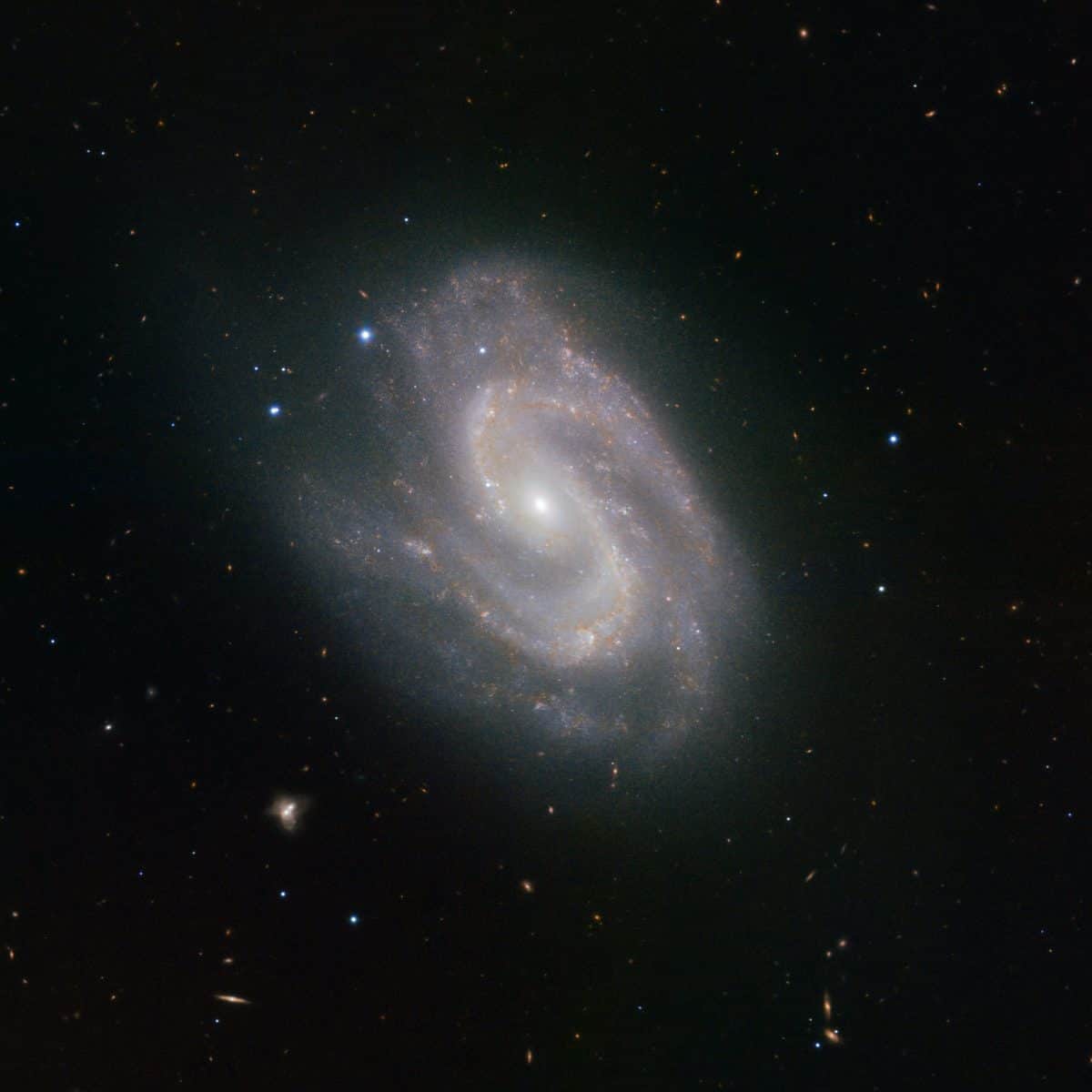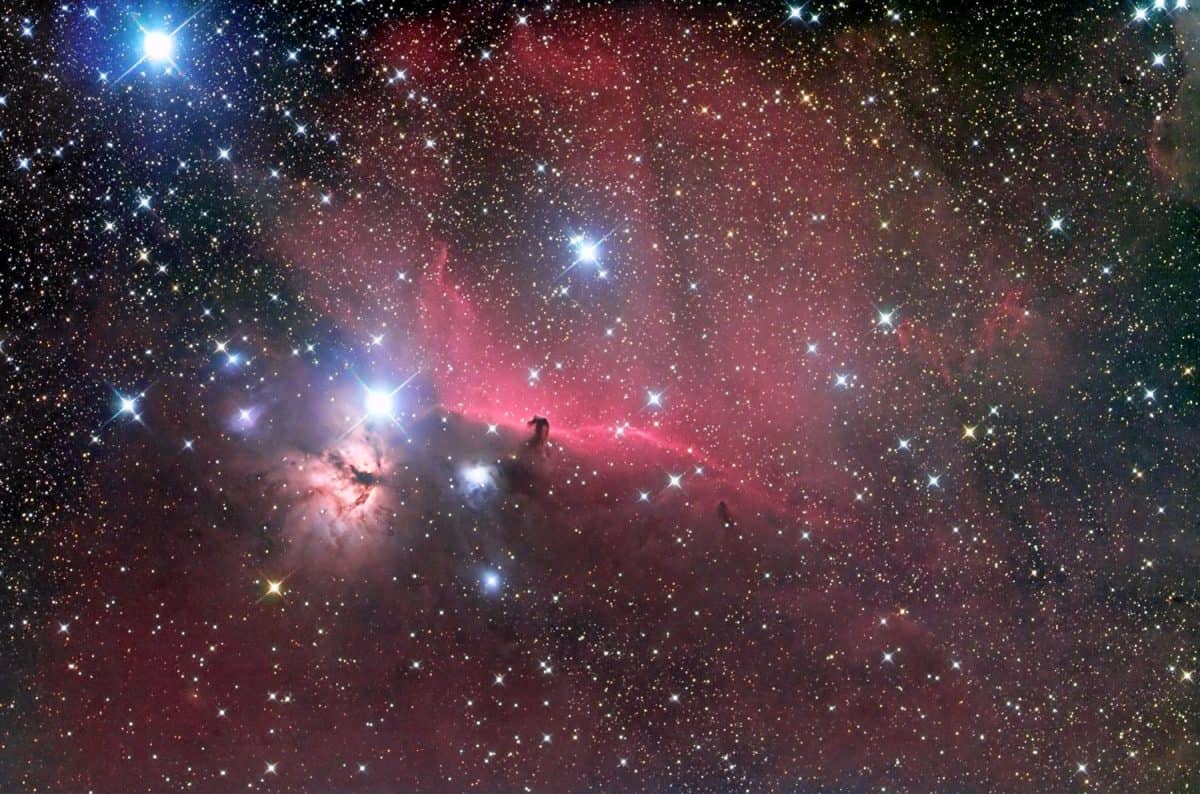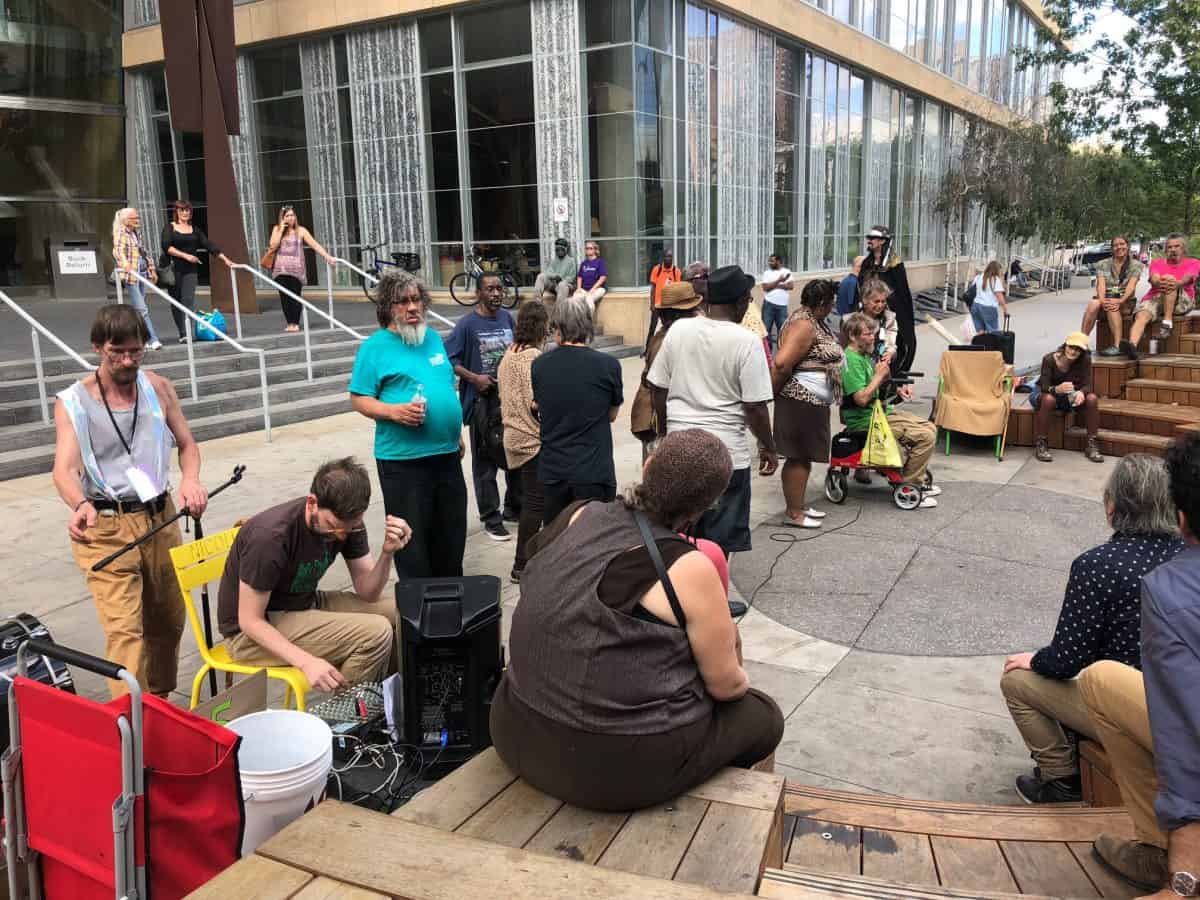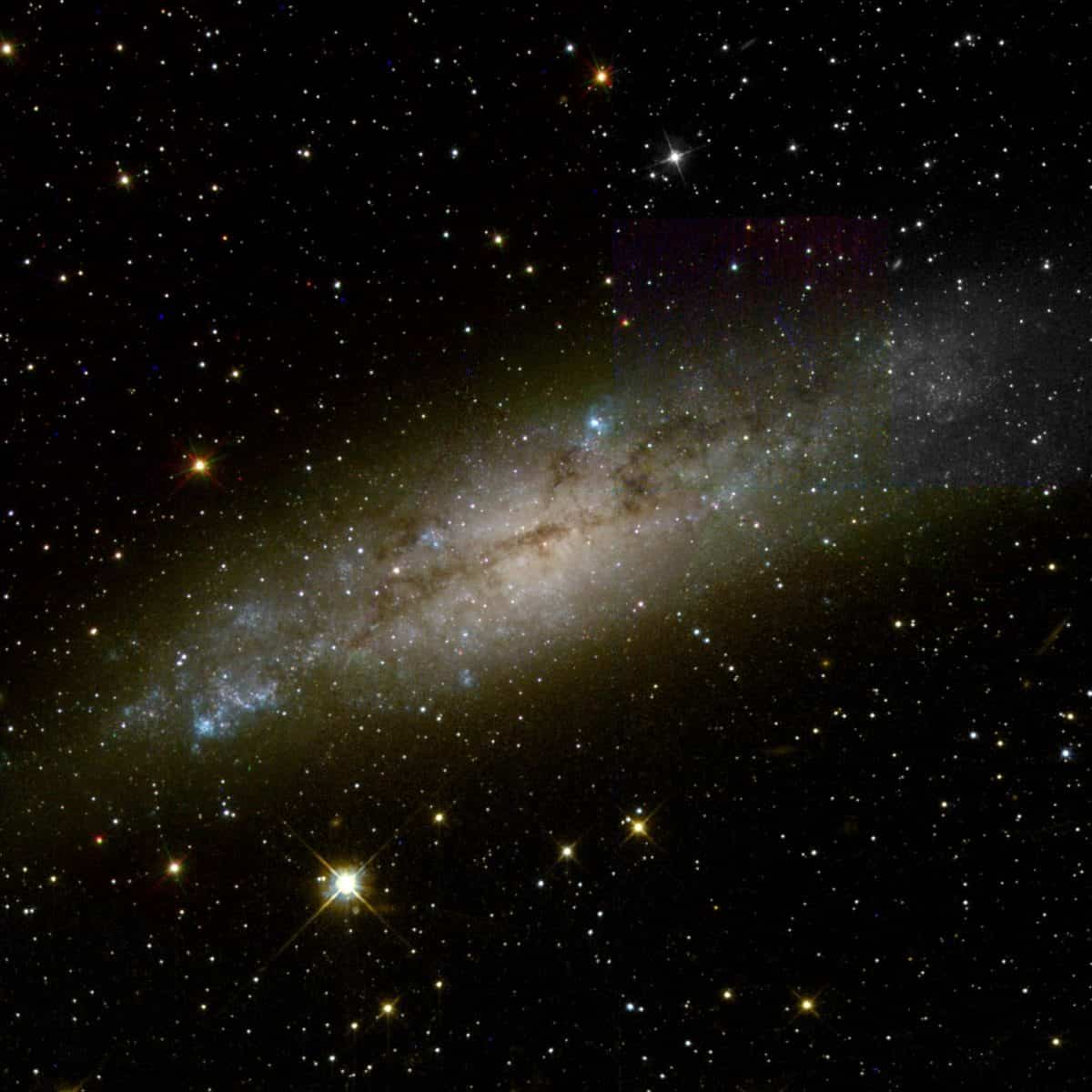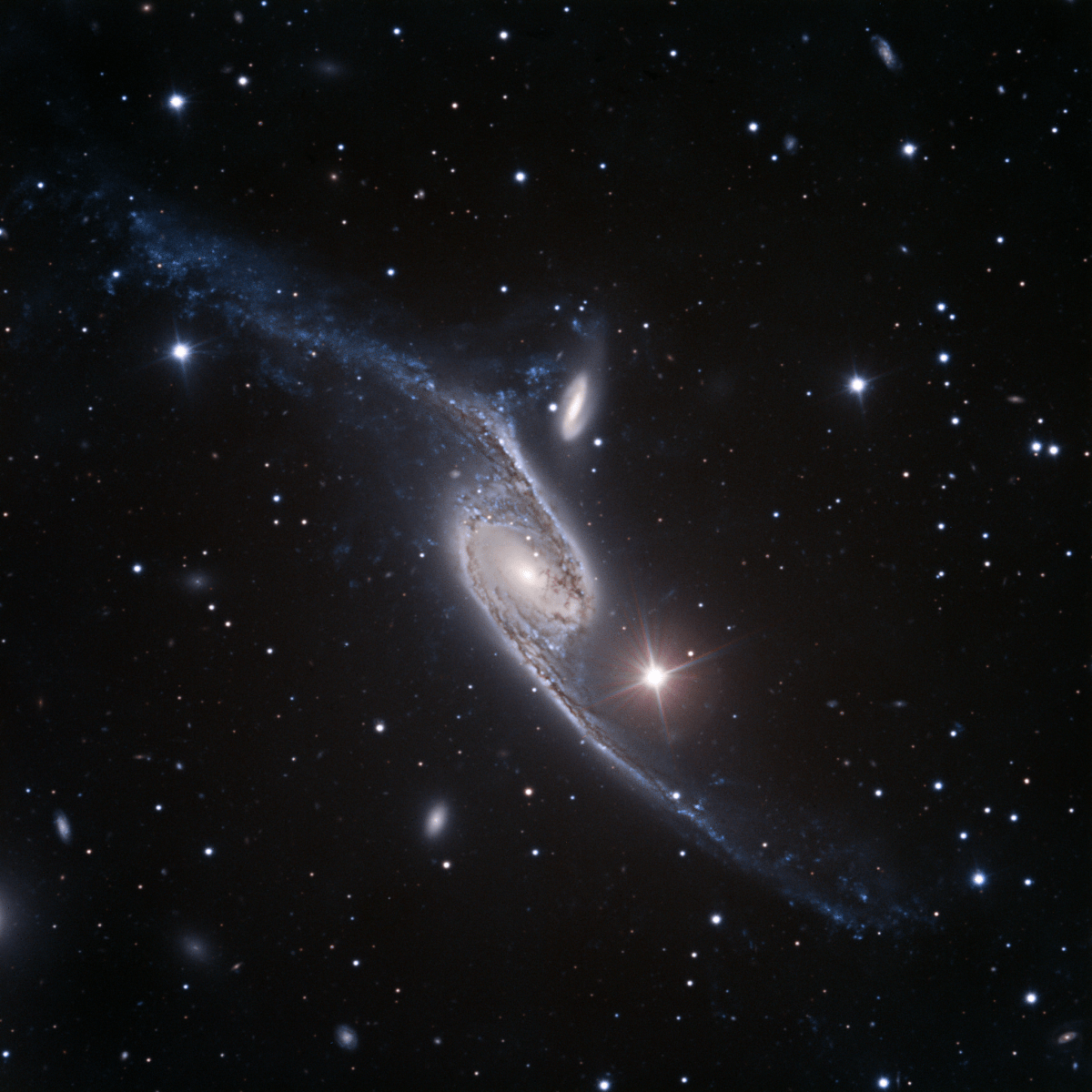Blog
NGC 157 is a spiral galaxy in the constellation of Cetus. The compiler of the New General Catalogue, John Louis Emil Dreyer noted that NGC 157 was “pretty bright, large, extended, between 2 considerably bright stars”. It was discovered on December 13, 1783 by William Herschel.
76.3 MLY
more...Kenneth David “Kenny” Kirkland (September 28, 1955 – November 12, 1998) was an American pianist/keyboardist.
Born in Brooklyn, New York in 1955, Kirkland was six when he first sat down at a piano keyboard. After years of Catholic schooling, Kirkland enrolled at the Manhattan School of Music, where he studied classical piano performance, classical theory and composition.
Kirkland’s first professional work came with Polish fusion violinist Michal Urbaniak, touring throughout Europe with his group in 1977. Coincidentally, his next high-profile gig was with another Eastern European jazz émigré, Miroslav Vitous. Kirkland is featured on Vitous’ ECM recordings First Meeting and Miroslav Vitous Group.
more...Koko Taylor (born Cora Anna Walton, September 28, 1928 – June 3, 2009) was an American singer whose style encompassed many genres, including Chicago blues, electric blues, rhythm and blues and soul blues. She was sometimes called “The Queen of the Blues.” She was known for her rough, powerful vocals and traditional blues stylings. Her name was sometimes styled KoKo Taylor.
Born on a farm near Memphis, Tennessee, Taylor was the daughter of a sharecropper. She left Tennessee for Chicago in 1952 with her husband, Robert “Pops” Taylor, a truck driver. In the late 1950s she began singing in blues clubs in Chicago. She was spotted by Willie Dixon in 1962, and this led to more opportunities for performing and her first recording contract, in 1965, with Checker Records, a label owned by Chess Records, for which she recorded “Wang Dang Doodle“, a song written by Dixon and recorded by Howlin’ Wolf five years earlier. The record became a hit, reaching number four on the R&B chart and number 58 on the pop chart in 1966, and selling a million copies. She recorded several versions of the song over the years, including a live rendition at the 1967 American Folk Blues Festival, with the harmonica player Little Walter and the guitarist Hound Dog Taylor. Her subsequent recordings, both original songs and covers, did not achieve as much success on the charts.
more...John Gilmore (September 28, 1931 – August 20, 1995) was an avant-garde jazz saxophonist known for his tenure with keyboardist/bandleader Sun Ra from the 1950s to the 1990s.
Gilmore grew up in Chicago and played clarinet from the age of 14. He took up the tenor saxophone while serving in the United States Air Forcefrom 1948 to 1952, then pursued a musical career, playing briefly with pianist Earl Hines before encountering Sun Ra in 1953.
For the next four decades, Gilmore recorded and performed almost exclusively with Sun Ra. This was puzzling to some, who noted Gilmore’s talent, and thought he could be a major star like John Coltrane or Sonny Rollins. Despite being five years older than Gilmore, Coltrane was impressed with his playing, and took informal lessons from Gilmore in the late 1950s. Coltrane’s epochal, proto–free jazz “Chasin’ the Trane” was inspired partly by Gilmore’s sound.
In 1957 he co-led with Clifford Jordan a Blue Note session which resulted in the album Blowing in from Chicago. The rhythm section featured Horace Silver, Curly Russell, and Art Blakey. In the mid-1960s, Gilmore toured with the Jazz Messengers and he participated in recording sessions with Paul Bley, Andrew Hill (Andrew!!! and Compulsion), Pete La Roca (Turkish Women at the Bath), McCoy Tyner (Today and Tomorrow) and a handful of others. In 1970 he co-led a recording with Jamaican trumpeter Dizzy Reece. His main focus throughout, however, remained with the Sun Ra Arkestra.
more...World Music on Flamenco Fridays with Rafael Riqueni: Y Enamorarse (Alegrías)
Alegrías (Spanish pronunciation: [aleˈɣɾi.as]) is a flamenco palo or musical form, which has a rhythm consisting of 12 beats. It is similar to Soleares. Its beat emphasis is as follows: 1 2 [3] 4 5 [6] 7 [8]9 [10] 11 [12]. Alegrías originated in Cádiz. Alegrías belongs to the group of palos called Cantiñas and it is usually played in a lively rhythm (120-170 beats per minute). The livelier speeds are chosen for dancing, while quieter rhythms are preferred for the song alone.
One of the structurally strictest forms of flamenco, a traditional dance in alegrías must contain each of the following sections: a salida (entrance), paseo (walkaround), silencio (similar to an adagio in ballet), castellana (upbeat section) zapateado (Literally “a tap of the foot”) and bulerías. This structure though, is not followed when alegrías are sung as a standalone song (with no dancing). In that case, the stanzas are combined freely, sometimes together with other types of cantiñas.
Recommended listenings for this palo include most singers from Cádiz, like Chano Lobato, La Perla de Cádiz, Aurelio Sellé, but also general singers like Manolo Caracol or La Niña de los Peines.
Also, you can listen “Mar Amargo” from Camarón and “La Tarde es Caramelo” from Vicente Amigo.
It is one of the cante chico forms of flamenco. The word Alegrías literally means “joys.”
more...IC 434 is a bright emission nebula in the constellation Orion. It was discovered on February 1, 1786 by William Herschel. The Horsehead Nebula is a dark nebula silhouetted against it.
1,500 ly from earth.
more...Robert Roland Chudnick (September 27, 1927 – May 27, 1994), known professionally as Red Rodney, was an American jazz trumpeter.
Born in Philadelphia, Pennsylvania, he became a professional musician at 15, working in the mid-1940s for the big bands of Jerry Wald, Jimmy Dorsey, Georgie Auld, Elliot Lawrence, Benny Goodman, and Les Brown. He was inspired by hearing Dizzy Gillespie and Charlie Parker to change his style to bebop, moving on to play with Claude Thornhill, Gene Krupa, and Woody Herman.
He accepted an invitation from Charlie Parker to join his quintet. and was a member of the band from 1949–1951. As the only white member of the group, he was billed as “Albino Red” when playing in the southern United States. During this time he recorded extensively.
During the 1950s, he worked as a bandleader in Philadelphia and recorded with Ira Sullivan. He became addicted to heroin and started a pattern of dropping in and out of jazz. In 1958 he left jazz because of diminishing opportunities, lack of acceptance as a white bebop trumpeter, and legal problems due to his heroin addiction. He continued to work in other musical fields. Although he continued to be paid well, he supported his drug habit through theft and fraud, eventually spending 27 months in prison.
In 1963, during a run-in with police, a detective hit him in the mouth, loosening several teeth and starting the cycle of dental issues that continued into the 1970s. In September 1963, his father died; a month later, while his wife was driving him back from a Las Vegas gig, she lost control of their car and plunged down a Nevada highway embankment. Asleep in the back seat, he awoke to find his wife and 14-year-old daughter dead.
During 1969, Rodney played in Las Vegas with fellow Woody Herman colleague, trombonist Bill Harris, as part of the Flamingo casino house band led by Russ Black. Similar work continued through 1972.
https://www.youtube.com/watch?v=oye9hle78bM
more...Earl Rudolph “Bud” Powell (September 27, 1924 – July 31, 1966) was an American jazz pianist. Though Thelonious Monk was a close friend and influence, his greatest piano influence was Art Tatum.
Along with Charlie Parker, Monk, and Dizzy Gillespie, Powell was a leading figure in the development of modern jazz, or bebop. His virtuosity led many to call him the Charlie Parker of the piano. Powell was also a composer, and many jazz critics credit his works and his playing as having “greatly extended the range of jazz harmony.”
Powell’s father was a stride pianist. Powell took to his father’s instrument at a very young age, starting on classical-piano lessons at the age of five. His teacher, hired by his father, was a West Indian man named Rawlins.
https://www.youtube.com/watch?v=hiS6XL3jVvk
more...Nordic Raga is an inspired meeting between three Swedish folk musicians, Mats Edén (fiddle), Pär Moberg (saxophone, didgeridoo, flutes), Dan Svensson (percussion, vocals), and a South Indian musician, Jyotsna Srikanth (violin), around the concept on making music mainly based on improvisation.
more...Second Chance final performance by zAmya Theater. Actors and singers of the Homeless Community.
Performing Wednesday 9-26-18 530pm East Phillips Park next to the ‘Wall of Forgotten Natives’ homeless encampment.
Music by mick laBriola and Momoh Freeman.
more...Rhythm Roots Workshop returns to PRI Partnership Resources Inc in Minneapolis. 9-26-18 1130am-130pm
Drumming rehearsal sessions for MIA “Expressing Me” showcase on October 19th
Drumming for the Developmentally Disabled community with Renee, Kamie, Elijah, Alex & Jaz!
more...50 MLY from Earth
Dorado Constellation Sb type galaxy discovered by William Herschel and John Frederick in 1834
more...Nicholas Payton (born September 26, 1973) is an American trumpet player and multi-instrumentalist. A Grammy Award winner, he is from New Orleans, Louisiana. He is also a prolific and provocative writer who comments on a multitude of subjects, including music, race, politics, and life in America.
The son of bassist and sousaphonist Walter Payton, he took up the trumpet at the age of four and by age nine was sitting in with the Young Tuxedo Brass Band alongside his father. He began his professional career at ten years old as a member of James Andrews’ All-Star Brass and was given his first steady gig by guitarist Danny Barker at The Famous Door on Bourbon Street. He enrolled at the New Orleans Center for Creative Arts and then at the University of New Orleans.
more...George Jacob Gershwin (/ˈɡɜːrʃ.wɪn/; September 26, 1898 – July 11, 1937) was an American composer and pianist. Gershwin’s compositions spanned both popular and classical genres, and his most popular melodies are widely known. Among his best-known works are the orchestral compositions Rhapsody in Blue (1924) and An American in Paris (1928), as well as the contemporary opera Porgy and Bess (1935).
Gershwin studied piano under Charles Hambitzer and composition with Rubin Goldmark, Henry Cowell and Joseph Brody. He began his career as a song plugger, but soon started composing Broadway theatre works with his brother Ira Gershwin and Buddy DeSylva. He moved to Paris intending to study with Nadia Boulanger, who refused him, where he subsequently composed An American in Paris. After returning to New York City, he wrote Porgy and Bess, with Ira, and the author DuBose Heyward. Initially a commercial failure, Porgy and Bess later went on to be considered one of the most important American operas of the Twentieth century, and an American cultural classic.
Gershwin moved to Hollywood and composed numerous film scores until his death in 1937 from glioblastoma multiforme, a malignant brain tumor.
Gershwin’s compositions have been adapted for use in many films and for television, and several became jazz standards recorded and covered in many variations. Many celebrated singers and musicians have performed his songs.
Gershwin was of Russian Jewish and Lithuanian Jewish ancestry. His grandfather, Jakov Gershowitz, had served for 25 years as a mechanic for the Imperial Russian Army to earn the right of free travel and residence as a Jew; finally retiring near Saint Petersburg. His teenage son, Moishe Gershowitz, worked as a leather cutter for women’s shoes. Moishe Gershowitz met and fell in love with Roza Bruskina, the teenage daughter of a furrier in Vilnius.
https://www.youtube.com/watch?v=uPRiM5JvYx8
more...https://www.youtube.com/watch?v=txFWJbHgcMM
more...Rhythm Roots Workshop returns to PRI Partnership Resources Inc in St Louis Park. 9-25-18 1130am-130pm
Drumming rehearsal sessions for MIA “Expressing Me” showcase on October 19th
Drumming for the Developmentally Disabled community with Derrick, Mike and Nymeh!
more...
NGC 6872, also known as the Condor Galaxy, is a large barred spiral galaxy of type SB(s)b pec in the constellation Pavo. It is 212 million light-years (65 Mpc) from Earth and is approximately five billion years old. NGC 6872 is interacting with the lenticular galaxy IC 4970, which is less than one twelfth as large. The galaxy has two elongated arms; from tip to tip, NGC 6872 measures 522,000 light-years (160,000 pc), making it one of the largest-known spiral galaxies.[2][note 1] It was discovered on 27 June 1835 by English astronomer John Herschel.
When observed in the ultraviolet and mid-infrared, the central region and bar of NGC 6872 show old stars and low rates of star formation, with rates increasing along the spiral arms as distance from the core increases. The most active region of star formation, located in the northeast arm, shows a stellar flux around 1,000 times higher than in the central region, though this may be affected by the density of stellar dust in the core. The extended portions of both arms exhibit young star cluster formations with ages ranging from one to one hundred million years. Star formation rates in the northeast extended arm are twice that of the southwest extended arm, and five times the formation rate in the sections of the arms closer to the central region.
more...More Posts
- The Cosmos with IC 2631
- George Russell Day
- Milt Hinton Day
- World Music with Mustapha Tettey Addy
- Daily Roots with Turbulence
- The Cosmos with NGC 4565
- Kris Kristofferson Day
- Ray Mantilla Day
- Cal Green Day
- World Music with ESTRELLA MORENTE
- Daily Roots with Sizzla
- The Cosmos with NGC 5426/27
- Eric Reed Day
- Lalo Schifrin
- Skip James Day
- World Music with Alekos K. Vretos
- Daily Roots with Ijahman Levy
- The Cosmos with M16
- Eric Dolphy Day
- Lazy Lester Day
